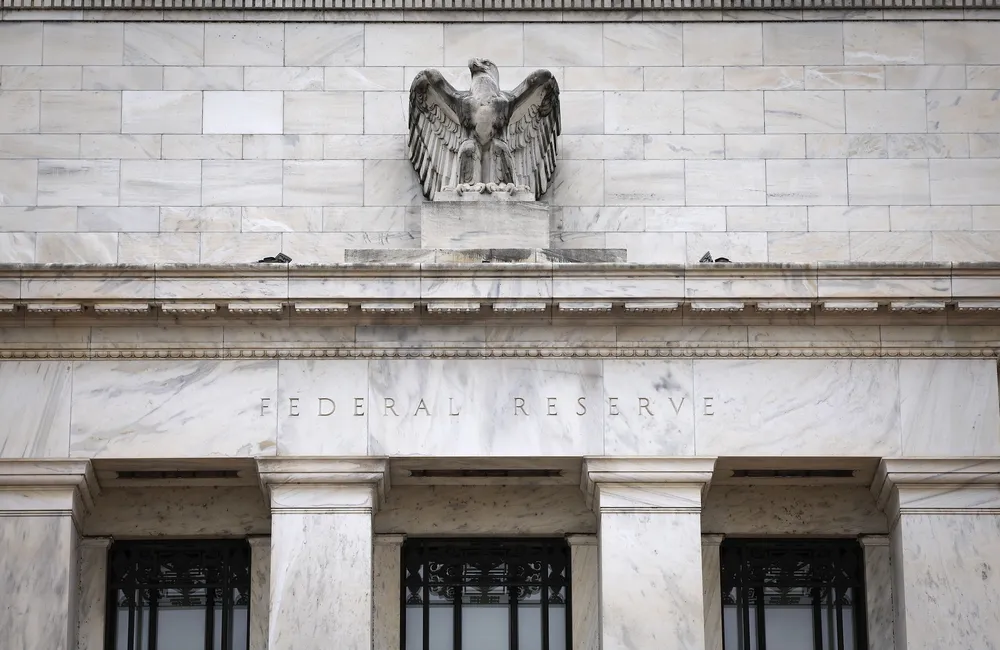ASX futures were 4 points lower at 7152 at 7:00am AEDT on Friday, signalling a fall at the open.
The S&P 500 was down 0.2 percent in afternoon trading, reducing some of its sharper losses earlier in the day. The benchmark index slid 0.8% Wednesday, erasing some of the banner gains stocks made last week. The technology-heavy Nasdaq Composite surged back and forth between small gains and losses, and the Dow Jones Industrial Average rose less than 0.1%. All three indexes are still higher for the month of November.
Stocks rocketed higher last week after reports of more tempered inflation and hopes that the Federal Reserve would back off of its campaign of interest-rate increases. The Federal Reserve officials have pushed back against that idea, and strong data on the economy have added to worries that the Fed will continue to lift rates for a while to come in order to put the brakes on inflation.
In the commodities markets, Brent crude fell 3.72 a barrel, gold slipped 0.7% to US$1,760.94. Front-month futures contracts for West Texas Intermediate crude fell to their lowest level in more than six weeks, despite the fact that United States refineries are running at a strong pace and drawing down inventories, thereby tightening up crude supplies. Traders back away as hopes for China’s pandemic reopening fade.
Yields on local 2-year government bonds fell to 3.10% (down 0.00%) and 10-year government bonds slipped to 3.61% (down 0.01%). Abroad, 2-Year US Treasury yields were rising to 4.45% and 10-Year US Treasury yields were down at 3.77%.
The Australian dollar was trading at 66.86 US cents, down from 67.41. The WSJ Dollar Index, which measures the U.S. currency against 16 others, was slightly higher at 99.63.
Asia
Chinese shares finished mixed, with the Shanghai Composite Index declining for a second consecutive day as the number of Covid-19 cases in the country continued to climb, testing Beijing’s decision last week to roll back some pandemic-related restrictions. Softness among coal miners and auto makers weighed on the market, while software companies strengthened. Yankuang Energy fell 6.1% and China Coal Energy fell 3.6%, and Great Wall Motor slid 2.9%. Yonyou Network was among the biggest winners, up 6.7% and iFlytek gained 2.5%. The Shenzhen exchange’s benchmark index rose 0.1%, while the ChiNext price index, which tracks growth-oriented technology companies, ended 0.7% lower.
Hong Kong’s Hang Seng Index falls 1.7% to 17950.33 after U.S. stock retreats overnight. Wall Street shares were trading lower as investors analysed stronger-than-expected retail sales data and comments from the Federal Reserve that UOB analysts said should keep in place expectations that a pause on tightening is not in the cards. The decliners: Meituan, down 5.6% on news that Tencent Holdings will sell off its $20 billion stake in the food delivery platform. Tencent shares are down 2.5%. Alibaba Health Information Technology is lower, by 5.8%.
The Nikkei Stock Average finished down 0.3% at 27930.57 on increased geopolitical tension in the region, after the missile launch by North Korea off its east coast. Shares of steel-related companies were off. Nippon Steel lost 1.3%, JFE Holdings shed 0.9% and Kobe Steel slid 1.1%. Eyes may be on Japan’s auto sector after local media reports said Japanese authorities are considering a mileage tax on electric vehicles. Toyota Motor fell 0.1 percent, while Nissan Motor declined 1.8 percent and Honda Motor was off 0.4 percent. At last check, USD/JPY was 139.36 from 139.54 late Wednesday in New York. The latest 10-year Japanese government bond had no trades.
Europe
European Shares European stocks traded mixed as investors digested the UK government's new fiscal plans and comments from Federal Reserve official James Bullard. The pan-European Stoxx Europe 600 had declined 0.4%, and the French CAC 40 was down 0.5%. The German DAX, however, is up 0.2% as Siemens jumps 6.6% after the engineering and technology group's 4Q results out...
"European markets have had another difficult session today and look set to finish lower for the second day in succession after the latest UK budget highlighted a rather glum outlook for the UK economy over the next two years, in the wake of recent hawkish comments from St. Louis Fed President James Bullard and with the dollar on the rise," CMC Market analyst Michael Hewson said.
In London, the FTSE 100 ended 0.1% lower after the U.K. Finance Minister Jeremy Hunt announced his new fiscal blueprint and forecast a tough two years for the economy.
“These measures will heap further pressure on already struggling consumers and deepen the U.K. recession, the deepest among the major economies,” Ben Laidler, an analyst at eToro, said in a note. Ocado, the online grocer, was the biggest faller on the session, sliding 8.6%, followed by the oil and gas producer Harbour Energy, which lost 5.9%, and the investment business Hargreaves Lansdown, down 4.8%. The biggest riser was Centrica, which jumped 5.4%, while Lloyds Banking and Imperial Brands rose 3% and 2.7%.
North America
Stocks wavered on Thursday, with investor enthusiasm over a potential slowdown in interest-rate increases losing momentum. The S&P 500 was down 0.2 percent in afternoon trading, cutting its steeper declines from earlier in the day. The benchmark gauge had fallen 0.8% Wednesday, giving back some of the banner gains posted by the stock market last week. The technology-focused Nasdaq Composite traded in a narrow range of gains and losses, while the Dow Jones Industrial Average edged up by less than 0.1 percent. All three indexes are still up for November.
Stocks rallied last week when inflation data cooled, raising hopes that the Federal Reserve might ease up on its campaign of interest-rate increases. Fed officials have pushed back against that idea, and strong economic data has only reinforced fears that the Fed will continue to raise rates for some period to come in an effort to tame inflation.
In comments Thursday, St. Louis Fed President James Bullard said rates have to go up higher in order to restrict the economy in such a way that it’ll bring inflation back to the Fed’s target. Mr. Bullard didn’t provide a specific number, but a chart that accompanied his remarks suggested the Fed’s policy rate could reach a range of 5% to 7%. The Fed, this month, increased its target rate to a range of 3.75% to 4%.
“Much of the strong rally in markets over the past week has been predicated on the idea the Fed will soon pivot,” said Edward Park, chief investment officer at Brooks Macdonald. “The Fed has communicated that it’s not going to do that.”
Still, Mr. Park said that “if inflation is starting to roll over, the Fed will stop and we’ll see,” adding that “it is worth waiting to see if inflation has really peaked or whether the number in November, just like the number in July, is not truly indicative of the overall rhythm.”
On the economic front, data revealed that 222,000 individuals filed for initial jobless claims last week. That was 4,000 lower than the previous week and is a sign that the labor market remains strong.
That compares with the deluge of layoffs that have hit the technology industry in recent weeks, and some analysts said it portends more job cuts in the offing. Amazon said Wednesday that it plans to eliminate roughly 10,000 jobs, following Meta Platforms, the parent company of Facebook, in announcing layoffs.
“The market overextended itself in pricing in Fed rate cuts for 2023,” said John Brady, a managing director at futures brokerage R.J. O’Brien. “The reality is, it’s going to be hard to see inflation drop at the rate that it went up in 2021 and 2022.”

























